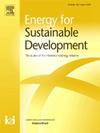感应烹饪在发展中国家面临障碍吗?尼泊尔人感知的实证分析
IF 4.9
2区 工程技术
Q2 ENERGY & FUELS
引用次数: 0
摘要
电磁炉因其无排放、安全、高效的特点,是一种很有发展前途的烹饪技术。然而,它在发展中国家的采用面临着重大障碍。现有的研究对烹饪能源和技术的障碍进行了重大分析,但忽视了感应烹饪的具体障碍。此外,没有使用多个多标准决策分析(MCDA)模型的比较分析来评估不同工具的稳健性。过去的研究也主要依靠专家的意见,往往忽略了家庭的观点。本研究根据专家和家庭的看法,确定了尼泊尔采用感应烹饪的主要障碍,并对其进行了排名。根据文献综述和来自学术界和非政府组织的专家咨询,确定了21个障碍,并将其分为五类。47名专家和220个电磁炉用户家庭分别对这些障碍进行了优先排序。专家们使用Saaty量表比较了这些障碍,并通过层次分析法(AHP)和模糊层次分析法(FAHP)对它们的输入进行了分析。虽然这两种方法都基于专家判断对备选方案进行排序,但FAHP结合了模糊逻辑,以更好地捕捉不确定性和人的主观性。同时,家庭使用基于排名的频率分析对障碍进行优先排序。敏感性分析表明,相对于AHP, FAHP是最有效的决策工具,因为其排名稳定可靠。基于fahp的专家排名显示,经济标准是影响最大的类别,51.19%的专家将不良的电线/计量列为最大障碍。相反,家庭排名表明,38.6%的受访者认为,高峰负荷管理不当是最关键的障碍。两组人都强调技术障碍是采用感应烹饪的重大挑战。该研究建议将传统计量系统改造为15A连接,配备专用电源插座和安全机制,帮助政策制定者和公用事业公司支持尼泊尔的清洁和可持续烹饪解决方案。本文章由计算机程序翻译,如有差异,请以英文原文为准。
Is induction cooking facing barriers in developing countries? An empirical analysis using people's perception in Nepal
Induction stove is a promising cooking technology due to its emission-free, safe, and high efficiency. However, its adoption in developing countries faces significant barriers. Existing studies have significantly analysed barriers to cooking energy and technology, but have overlooked those specific to induction cooking. Moreover, no comparative analysis using multiple multi-criteria decision analysis (MCDA) models has assessed the robustness of different tools. Past studies also mainly rely on expert opinions only, often neglecting household perspectives. This study identifies and ranks the primary barriers to induction cooking adoption in Nepal, based on the perceptions of both experts and households. Drawing on literature review and expert consultations from academia and non-governmental organisations, 21 barriers were identified and grouped into five categories. These barriers were prioritised separately by 47 experts and 220 induction stove user households. Experts compared the barriers using the Saaty scale, and their inputs were analysed through the Analytical Hierarchy Process (AHP) and Fuzzy Analytical Hierarchy Process (FAHP). While both methods rank alternatives based on expert judgements, FAHP incorporates fuzzy logic to better capture uncertainty and human subjectivity. Meanwhile, households prioritised barriers using ranking-based frequency analysis. Sensitivity analysis showed FAHP to be the most effective decision-making tool compared to AHP due to stable and reliable rankings. FAHP-based expert rankings revealed the economic criterion as the most influential category, with poor electrical wiring/metering ranked as the top barrier by 51.19 % of experts. Conversely, household rankings indicated improper peak load management as the most critical barrier, cited by 38.6 % of respondents. Both groups highlighted technical barriers as a significant challenge to the adoption of induction cooking. The study recommends retrofitting traditional metering systems to 15A connections with dedicated power outlets and safety mechanisms, helping policymakers and utilities in supporting clean and sustainable cooking solutions in Nepal.
求助全文
通过发布文献求助,成功后即可免费获取论文全文。
去求助
来源期刊

Energy for Sustainable Development
ENERGY & FUELS-ENERGY & FUELS
CiteScore
8.10
自引率
9.10%
发文量
187
审稿时长
6-12 weeks
期刊介绍:
Published on behalf of the International Energy Initiative, Energy for Sustainable Development is the journal for decision makers, managers, consultants, policy makers, planners and researchers in both government and non-government organizations. It publishes original research and reviews about energy in developing countries, sustainable development, energy resources, technologies, policies and interactions.
 求助内容:
求助内容: 应助结果提醒方式:
应助结果提醒方式:


